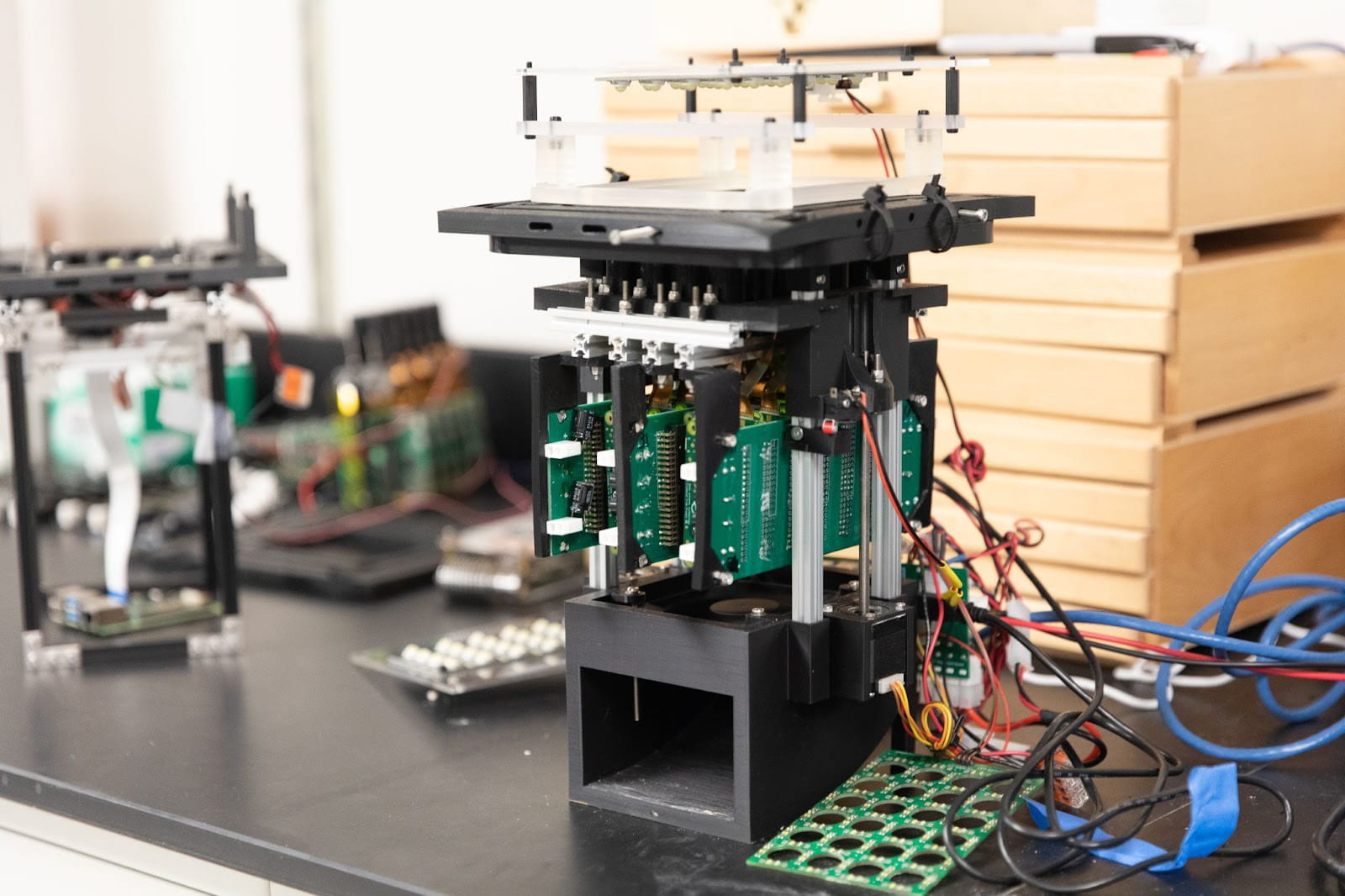
Technology Development
Genomic studies in health, conservation, and human sequencing would not be possible without platforms and technologies for sharing massive amounts of data. From software that can display over ten million Covid-19 sequences on a single phylogenetic tree to nanopore technologies that are allowing clinicians to rapidly sequence patient genomes in under six hours, our technology is helping to create a revolution in the field of genomics.
Computational Nanopore Genomics
Investigators at the UC Santa Cruz conceptualized and patented the technology licensed by Oxford Nanopore’s MinION™ DNA sequencer. With the sequencer’s features of long-reads and portability, the MinION is ready to revolutionize the field of genomics. Nanopore sequencing has been used in projects like the Telomere to Telomere completion of a human genome and a world record in fastest genome sequencing.


High-throughput Genomics
Genomics is in transition. Large projects like The Cancer Genome Atlas have generated petabyte-scale datasets that very few groups have the capacity to analyze independently. We have joined with UC Berkeley’s AMP lab to pioneer ADAM, a genomics platform built on Apache Spark that can radically improve the efficiency of standard genomic analyses.
Dockstore
Dockstore, jointly developed and maintained by the UC Santa Cruz Genomics Institute, acts as an app store for bioinformatics analysis tools and is used by scientists worldwide. It provides a global cloud library of analytical workflows, so that researchers can easily find and use existing analysis tools, facilitating large-scale biomedical research collaborations.


UC Santa Cruz Storage Systems Research Center
The Center for Research in Systems and Storage (CRSS) is a partnership between academia and industry to explore and develop new technologies and techniques to improve software systems. Storage longevity, manageability, scalability, and reliability, remain a centerpiece of our research.
UCSC Biosensor & Biotechnology Group
The UCSC Biotechnology Group is seizing opportunities to broaden the fields of bioengineering and support other biomedical research. They have developed a new nanopipette technology that can be used to study the genomics of individual cells such as neurons while they are still alive. This method now makes it possible to look into the basic mechanisms of neurodegeneration.


Comparative Genomics Software
Comparative genomics uses genomic data to study the evolutionary relationships among species and to identify DNA sequences with essential functions conserved across many species. As mentioned above, researchers at the Genomics Institute developed a powerful genome alignment software, Progressive Cactus, that has made new studies possible, including the largest genome alignment ever achieved (more than 600 vertebrate genomes). The results provide a detailed view of how species are related to each other.
eDNA Explorer
eDNA Explorer is a new tool that will help people in conservation and ecology manage environmental DNA and other ecological data, analyze their data, learn what others are doing, and build a collaborative network. It will integrate different datasets and present them in interactive ways to help people learn, design studies, and evaluate results. The first version of this tool will focus on exploring the Los Angeles River watershed, but eventually will broaden functionality.

Completing the Human Genome
Founded by UC Santa Cruz Genomics Professor Karen Miga with NIH Researcher Adam Phillippy, the Telomere-to-Telomere consortium aims to generate the first truly complete assembly of a human genome, filling in the gaps in chromosome regions that were too complicated and costly to complete during the initial Human Genome Project.
Diversifying the Human Genome
Eliminating all gaps is only part of the challenge of creating a robust reference genome. Most current reference DNA has been collected from people of European descent, which cannot encompass all of human diversity. UC Santa Cruz’s David Haussler, Karen Miga, and Benedict Paten chair multiple working groups in the Human Pangenome Reference Consortium that is working to create a wider range of reference sequences.

The (First) Human Genome Project
Sequencing the complete human genome has been a long project, requiring the collaboration of thousands of researchers around the world. The UC Santa Cruz Genomics Institute is proud to have been a leader in this project from its inception.